Articles of 2008
Manny Pacquiao's No Secret Anymore
The great revelations that shape our way of thinking almost never come in the form of a burning bush or dreams in which angels imprint some divine truth upon our subconscious minds. More often, they come from what we see with our own eyes.
Such a moment of clarity occurred to me when I was a younger sportswriter working for a newspaper down south. I observed a sophomore running back at Jackson State University named Walter Payton galloping through the other team’s defense as if he were a frisky colt, and was immediately convinced he was destined to become something truly special. Two years later, in a freelance story I wrote for The Sporting News, I offered my opinion that Payton was better – a lot better – than Ohio State’s two-time Heisman Trophy-winning running back, Archie Griffin. That prompted a deluge of hate mail from irate Buckeyes fans who questioned my vision, sanity and parentage.
That Payton’s Hall of Fame NFL career validated my first impression of him did not mean that I should have switched careers and become a pro football talent scout. (I also felt the same enthusiastic rush the first time I saw a lanky wide receiver from Mississippi Valley State named Jerry Rice.) Sometimes there’s just no way to ignore the obvious.
Ed Schuyler Jr., the longtime boxing writer for the Associated Press, recalled a time when he, too, was struck by a thunderbolt of recognition. He saw something far beyond the ordinary, he believed it to be real and history was to bear him out.
“We went up to Grossinger’s in the Catskills to watch (WBA lightweight champion) Ken Buchanan train,” Fast Eddie told me of that late-summer day in 1971 when he recognized he was onto something that the rest of the world had yet to learn. “Buchanan wasn’t in the gym yet, but in the ring was this dusky, dark-haired guy. Roberto Duran.
“He was so … so … I don’t know, like an animal. A panther. I just had this sense that this kid was born to fight.”
To that point, Duran, only 20, was 24-0, with 21 knockout victories. Twenty-one of his fights had taken place in his native Panama, the other three in Mexico. And when the force of nature who came to be known as “Hands of Stone” made his American debut in Madison Square Garden on Sept. 13, 1971, against a solid journeyman, Benny Huertas, Schuyler knew his first impression had been correct.
“Duran blew through Huertas in less than a round, and Benny could fight,” Schuyler said. “I remember thinking, `We’re all going to have to watch this guy.’”
Duran fought and won three more times after he destroyed Huertas, all in Panama, before he returned to the Garden on June 26, 1972, to challenge Buchanan for the lightweight title. And when Duran bludgeoned the gritty Scotsman into submission in 13 mostly one-sided rounds, Schuyler’s secret had become public knowledge around the globe. An all-time great had entered out midst.
It remains to be seen whether Manny Pacquiao, whose eighth-round stoppage of the gilded remnants of Oscar De La Hoya stamped him as an international superstar, has the staying power to approach the accomplishments of the legendary Duran. But I can recall my first glimpse of him, when he was an undercard fighter mostly unknown to the U.S. media, making his American debut 7½ years ago at the same venue at which he eventually would take down De La Hoya. And, like Schuyler when he first saw that dusky Panamanian panther, I was enthralled.
It was June 23, 2001, and Pacquiao – whose 32-2 record, with 23 knockout wins, had been compiled nearly exclusively in the Philippines, with the occasional appearance in Japan and Thailand – was making his American debut at the MGM Grand as the challenger to Lehlohonolo Ledwaba, the IBF super bantamweight champion from South Africa. Not that many of us on press row cared one way or the other; most of what we were going to be writing about would be restricted to the main event, in which the hugely popular Oscar De La Hoya would be challenging Spain’s Javier Castillejo, the WBC super welterweight titlist from Spain.
But almost from the opening bell, there was something about Pacquiao that commanded my attention. He moved like a jungle predator and he hit like runaway locomotive. Ledwaba didn’t have a chance. He was stopped in six rounds and the crowd, which had come to see and cheer De La Hoya, buzzed in excitement over the performance of a little Filipino most probably had never heard of before that evening.
I’m not sure if Pacquiao knows much about Walter Payton or Jerry Rice, but when referee Joe Cortez finally pulled him away from the battered Ledwaba, I knew I had another name to add to my short list of athletes to keep track of during their rocketing rises to the top.
The funny thing is, even as I believed that Pacquiao was my private discovery, I wasn’t sure if I could commit to him as totally as did Schuyler to the youthful Duran. Maybe it’s because in checking Pac-Man’s record I noticed that he had been stopped in his only two losses, by guys named Rustico Torrecamp and Medgoen Singsurat, both in three rounds. Did my new object of fascination have a glass jaw? Was I seeing more to him than there really was?
Whatever my doubts, there never was a Pacquiao fight since that night in which I didn’t pick him to win, including his wars with Erik Morales and Juan Manuel Marquez. That’s the way it is with love affairs, right? You feel the zing to the strings of your heart, and your prevailing instinct is to remain faithful.
But then a funny thing happened in the lead-up to De La Hoya-Pacquiao. I began to question myself, to wonder if my crush on the Filipino had somehow begun to ebb. He had turned pro at 106 pounds, for chrissakes! His best performances had come at 122 and 130 pounds! And while it was true that he was superb in lifting David Diaz’s WBC lightweight title earlier this year on a ninth-round stoppage, I convinced myself that Diaz was not so much talented as tough, made-to-order for someone with skills as superior as Pacquiao’s.
When I looked at Oscar, I saw someone who was not only the naturally larger man, but a future Hall of Famer whose decisions on the choice of opponents always were carefully thought-out. De La Hoya had helped make his reputation years earlier by knocking off a succession of capable but smaller opponents who were willing to come up to him in order to secure the big payday he always represented. Wouldn’t the same formula hold true again, even if Oscar had shown signs of slippage in his points nod over Stevie Forbes on May 3?
So I turned my back on Pacquiao, a 2-1 underdog, and picked against him for the first time. Not only would he lose this one, I wrote, he wouldn’t make it to the final bell, as he didn’t in those long-ago throwdowns with Torrecampo and Singsurat, when he tasted De La Hoya’s power.
But Pacquiao’s victory was so absolute that you almost have to wonder if he really is that good, or if Oscar is that far gone. Perhaps it’s a combination of both. Only one thing is certain: as was the case when Roberto Duran’s constituency spread beyond the boundaries of Panama and Ed Schuyler Jr.’s fertile imagination, Manny Pacquiao is no one’s secret anymore. He’ll likely move down to 140 pounds for the Wembley Stadium showdown with England’s Ricky Hatton that would have gone to De La Hoya had he not been sent careening into the retirement EZPass lane.
If De La Hoya really is finished, as Roy Jones Jr. appeared to be in his beatdown by Joe Calzaghe, the list of old reliables is being whittled down fast. Calzaghe is talking retirement. Evander Holyfield, 46, is getting another title shot, against Russian giant Nikolay Valuev, the WBA heavyweight champion, but come on. The gallant Holyfield has been running on empty for how many years now?
Bernard Hopkins, at 43, still has fire in his furnace, as evidenced by his domination of the previously undefeated Kelly Pavlik, but his options appear limited at best. No one really wants to see Jones any more, and Calzaghe has implied that he’d rather undergo an unaesthetized root canal than to grant B-Hop a rematch. Boxing purists might want to see Hopkins swap punches with IBF light heavyweight champ Chad Dawson, but you have to wonder if that fight would be the sort of must-see event that would generate enough dollars to lure the Philadelphian back into the ring.
What it all means is that Manny Pacquiao is now the foremost face of boxing, the man whose every bout is so widely anticipated that he can tote the sport on his back as adroitly as did De La Hoya for so many years. And if he’s not capable of being that guy … what then?
Duran proved that a non-heavyweight from a foreign country, one who barely spoke English, could be a major hit with hard-to-please U.S. fans. But Duran had an advantage that Pacquiao doesn’t; he had Sugar Ray Leonard and Tommy Hearns and Marvin Hagler, among others, to be paired against in megafights. Whether Pacquiao can maintain that kind of popularity is the question everyone involved in boxing is waiting to be answered.
De La Hoya admitted to Pacquiao’s trainer, Freddie Roach, after Saturday’s defeat that “I just don’t have anything left,” but I wonder if he will change his mind after his bruises heal. Fighters such as he are never really convinced that they can’t mount one more comeback.
What De La Hoya-Pacquiao most reminded me of was the Feb. 9, 1991, fight between Sugar Ray Leonard and Terry Norris in Madison Square Garden. A lot of people believed that Leonard was so special that the natural laws of diminishing returns did not apply to him, and that he somehow could summon the old magic one more time. But wishing does not make it so, and Norris retained his WBC super welterweight title by beating the Sugar man silly for all 12 rounds.
Six years later, just two months shy of his 41st birthday, Leonard gave it another try, only to be stopped in five rounds by Hector Camacho.
I hope it doesn’t come to that for De La Hoya, who is too rich and too accomplished to go back in time to try to hook any big ones he believed got away.
As for those who only now are seeing Pacquiao the way I did the night he beat up Ledwaba, hey, join the club. Enjoy the rush while you can.
-
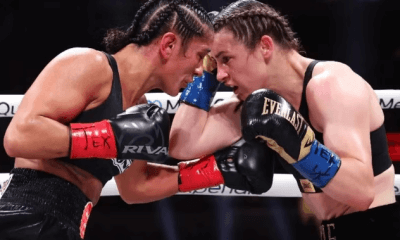
 Featured Articles3 weeks ago
Featured Articles3 weeks agoResults and Recaps from New York Where Taylor Edged Serrano Once Again
-

 Featured Articles4 days ago
Featured Articles4 days agoThe Hauser Report: Zayas-Garcia, Pacquiao, Usyk, and the NYSAC
-
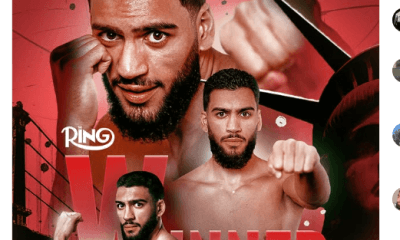
 Featured Articles3 weeks ago
Featured Articles3 weeks agoResults and Recaps from NYC where Hamzah Sheeraz was Spectacular
-
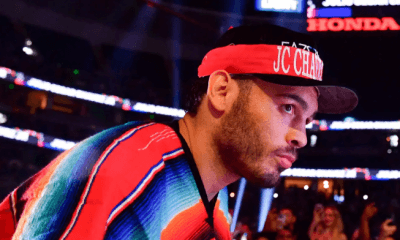
 Featured Articles3 weeks ago
Featured Articles3 weeks agoFrom a Sympathetic Figure to a Pariah: The Travails of Julio Cesar Chavez Jr
-
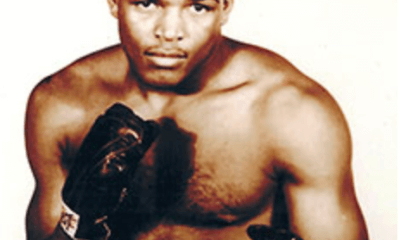
 Featured Articles3 weeks ago
Featured Articles3 weeks agoPhiladelphia Welterweight Gil Turner, a Phenom, Now Rests in an Unmarked Grave
-
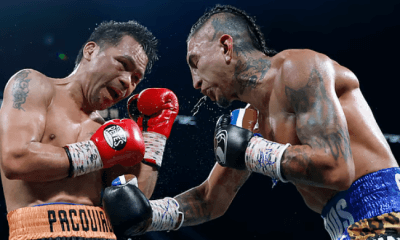
 Featured Articles2 weeks ago
Featured Articles2 weeks agoManny Pacquiao and Mario Barrios Fight to a Draw; Fundora stops Tim Tszyu
-
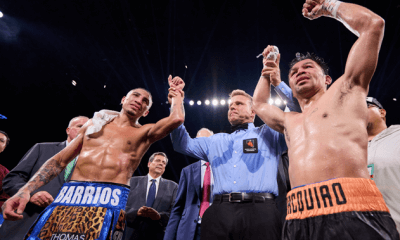
 Featured Articles1 week ago
Featured Articles1 week agoArne’s Almanac: Pacquiao-Barrios Redux
-
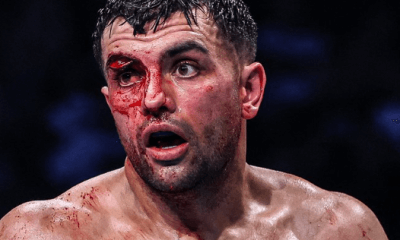
 Featured Articles4 weeks ago
Featured Articles4 weeks agoCatterall vs Eubank Ends Prematurely; Catterall Wins a Technical Decision















